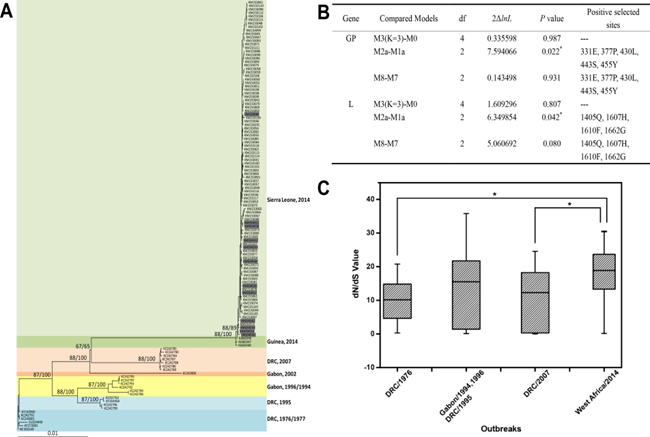Research Advances on Molecular Evolution of Ebola Virus
Date:21-09-2015 | 【Print】 【close】
The research group, led by Chinese researcher Bo Zhang from Center for Emerging Infectious Diseases (CEID) in WIV, CAS, has made progress in identifying the pattern of molecular evolution for Zaire ebolavirus (ZEBOV) in the 2014 outbreak in West Africa. The findings have been published on Infection Genetics and Evolution, an influential international journal on infectious diseases. To investigate the evolutionary properties of ZEBOV in this outbreak, the research group examined amino acid mutations, positive selection, and evolutionary rates on the basis of 123 ZEBOV genome sequences.
The estimated phylogenetic relationships within ZEBOV revealed that viral sequences from the same period or location formed a distinct cluster. Analysis of the seven protein regions of ZEBOV revealed evidence of positive selection acting on the GP and L genes. Interestingly, all putatively positive-selected sites identified in the GP are located within the mucin-like domain of the solved structure of the protein, suggesting a possible role in the immune evasion properties of ZEBOV. Compared with earlier outbreaks, the evolutionary rate of GP gene was estimated to significantly accelerate in the 2014 outbreak, suggesting that more ZEBOV variants are generated for human-to-human transmission during this sweeping epidemic.
This study reveals the genetic characteristics and the epidemiological dynamics for ZEBOV in the 2014 outbreak in West Africa, which is of great significance for the investigation on the molecular epidemiology of ZEBOV and the related vaccine design.
